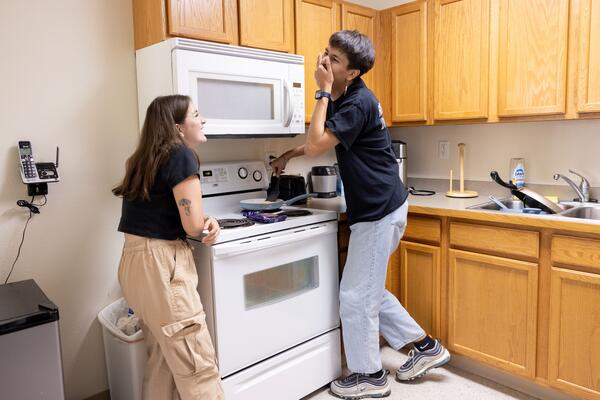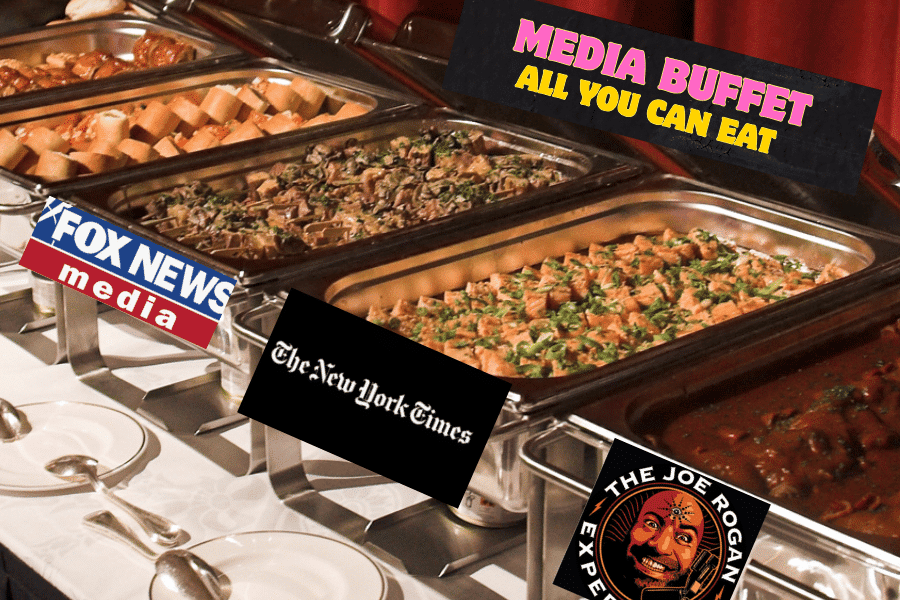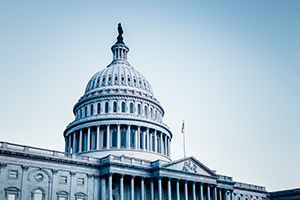We are bombarded with information from news sites, friends, entertainment platforms and companies — through articles, messages, images, videos, ads and graphics. It can be difficult to know or even think about where the information is coming from.
Whether you realize it or not, this tsunami of information affects you: It shapes what you know about events, how you see the world and how you feel about people, issues and products.
In order to further understand big global issues such as climate change, and how it affects communities all over the world, it is helpful to understand how the media functions, what journalists do and how you can communicate about the climate crisis yourself.
The media can and, ideally, should perform a variety of critical functions in any society. It should:
• Keep the public informed of current events and issues;
• Foster informed debate and discussion on matters of public importance;
• Hold powerful governmental and private actors to account.
Where media falls short
In reality, the media often fails to do that in part because some foundational “building blocks” that keep media strong and independent have eroded. A World Bank How-To Guide on media development identifies five building blocks for a robust and independent media sector:
1. Infrastructure: Everything from transmission towers and cables, to news disseminators, to cell phone ownership should be publicly-owned or in a competitive landscape of corporate owners.
2. Professional Skills and Editorial Independence: A country must have enough journalism professionals trained to gather, produce and publish information according to ethical standards, and who are protected by law and policies from interference by governmental or business actors.
3. Financial Sustainability: Media organizations must have financially-sustainable business models that enable them to employ journalism professionals and fund the gathering, production and dissemination of news content.
4. Policy and Regulatory Environment: A country’s legal and policy framework must support and protect the gathering and disclosure of information, uphold editorial independence and protect journalists and their sources.
5. Civil Society and the Public: There must be a media-literate public, journalists’ unions and free press watchdogs to both protect the journalists doing their jobs and hold them to account for transgressions of ethical codes.
How healthy is your media ecosystem?
Many countries around the world lack some or all of the core building blocks of a robust media sector. As a result, the media content available in these countries is often poor, and the media fails to perform its good governance functions.
You can evaluate the state of the media sector in different countries by referring to a variety of online resources, including Reporters Without Borders’ World Press Freedom Index and the Media Ownership Monitor.
But even in places where the press seems to have a great deal of freedom, the media most people consume might be in the control of a very few corporate owners and some of those corporations are privately held by one person or family.
Can you think of some reasons why governments and families might have an interest in controlling the media?
The short answer is that owning media enables you to control the message. You can influence:
• What information is supplied;
• How much information is provided on any particular person, issue or topic; and
• How the information is presented.
A sustainable media ecoystem
In a sustainable media ecosystem both government and private media owners would fulfill the “good governance” functions discussed above: keeping the public informed, fostering debate and holding the powerful to account.
Media owners do this when they put institutional safeguards in place to ensure that the people it employs can report on issues without restraint or fear of repercussion.
This is essential because a journalist is the eyes and ears of the public. Few people have the time or energy or attention to keep an eye on all the things their government does or all the decisions corporations make that affect their lives.
That’s why historically people subscribed to newspapers and why people now follow news sites and journalists on social media. We rely on journalists to go out into the world to ask questions, observe what is happening and gather factual information to report it all back to us.
In practice, many media outlets fall short of this goal.
Profits and the press
One way reputable media organizations protect editorial independence separating the editorial aims of the organization from its profit making function; the organization’s business operations don’t interact with the employees who produce its media content. That leaves journalists free to pursue important news stories, even if doing so could hurt the media outlet’s ability to sell ads or risks losing subscribers.
By doing this, the media organization builds and maintains credibility; It becomes a place where people come for information they can rely on. This information helps them make important decisions about their lives. Is it a good time to buy a house? Can they feel safe where they live? Will they be able to keep their jobs or find new ones?
Unfortunately, many media owners have found that it might be more profitable in the short term to focus news coverage in a way that pleases core audiences and advertisers. That happens when media consumers decide they will pay only for information that aligns with their beliefs and reject media that contradicts what they wish to believe.
Ultimately, we have to think of the media ecosystem as a buffet you can go to for your meals. If too many people choose only the foods that satisfy their cravings for the sweet and salty, not only will their own health suffer, but the people who stock the buffet will start eliminating healthy foods altogether. What seems like a lot of choice in what you consume will end up as a lot of the same and none of it healthy.
So what can you do to support a healthier and sustainable media ecosystem?
Understand who owns the media you consume. Diversify the sources from where you get your information and seek out contrasting perspectives. If you can afford it, pay for subscriptions to outlets that have a record of independence. Support organizations that fight for a free and robust press.
As a consumer of media, you have power you can exercise. Media producers rely on you to read or listen to or watch what they produce. If you choose to do so, you support what they are doing. If you don’t, you tell them a different message altogether.
Questions to consider:
1. What is a media ecosystem?
2. How many information sites have you visited in the last three days? Can you list them?
3. Pick one of those sites. Can you figure out who owns it? Is that company based in your country?

![[Podcast] Healthy Minds, Bright Futures: How to Navigate Mental Health & Build Support](https://blog.college-counseling.com/wp-content/uploads/2025/11/Podcast-Healthy-Minds-Bright-Futures-How-to-Navigate-Mental-Health.webp)



